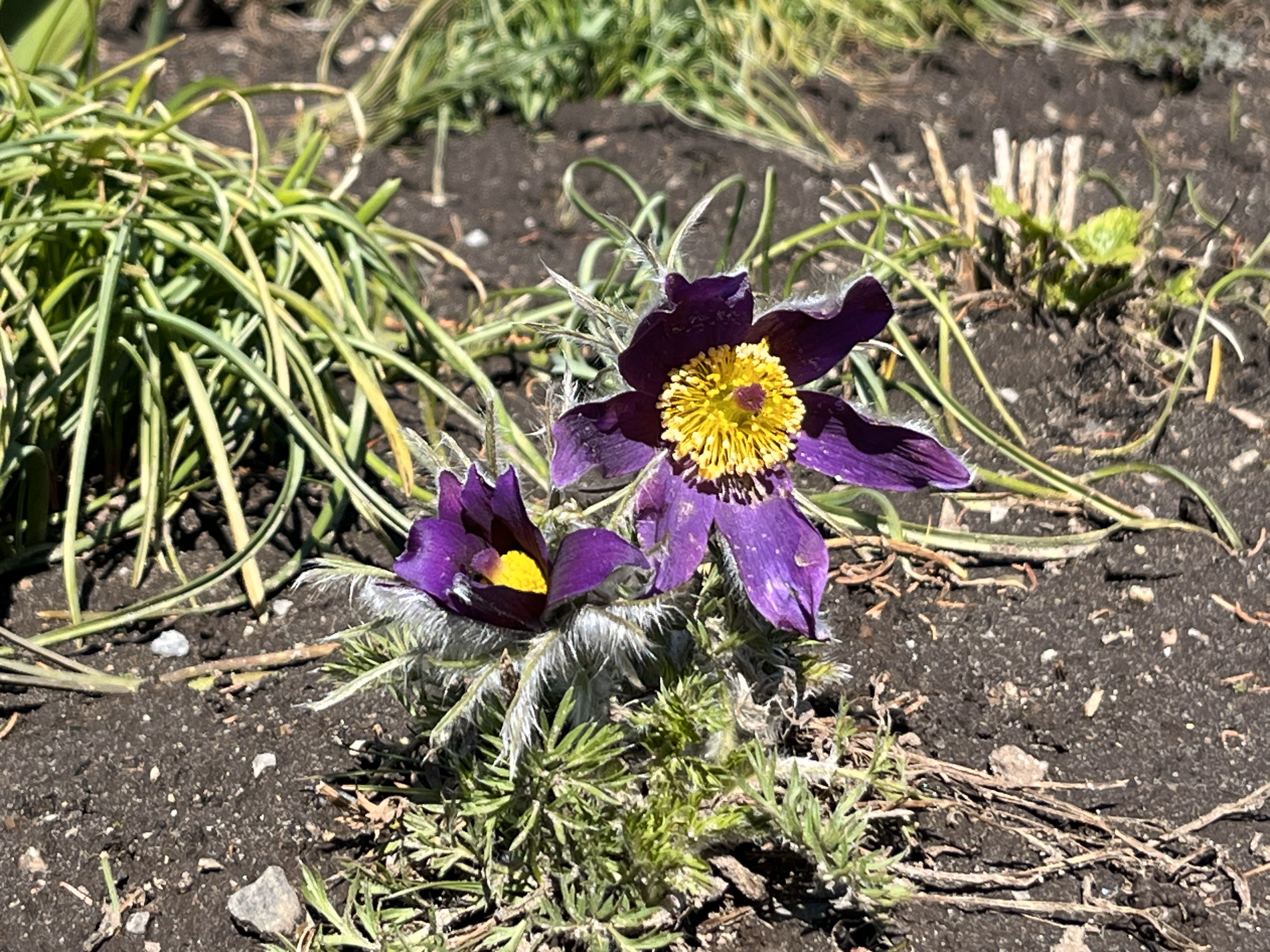
In the Gardens: Pulsatilla Vulgaris - the Pasqueflower
Nestled within the buttercup family (Ranunculaceae) lies a botanical jewel known as Pulsatilla vulgaris, colloquially recognized as the pasqueflower. Flourishing primarily in the calcareous grasslands of Europe, this species has garnered widespread admiration and finds itself meticulously cultivated in gardens across continents. Despite its botanical significance, its journey through taxonomy and cultural lore renders it a subject of fascination and reverence.
Taxonomic Journey
- Formerly classified within the genus Anemone, Pulsatilla vulgaris has undergone taxonomic scrutiny that eventually led to its recognition as a distinct species. While remnants of its former identity persist in some references as Anemone pulsatilla, contemporary botanical consensus firmly establishes its nomenclatural status as Pulsatilla vulgaris. This transition mirrors the evolving understanding of botanical relationships and underscores the dynamic nature of taxonomic science.
Diverse Monikers
- The pasqueflower, adorned with various common names such as the European pasqueflower and common pasqueflower, stands as an emblem of cultural diversity and botanical fascination. The nuanced variations in nomenclature reflect the multifaceted nature of this floral gem, serving as a testament to its enduring popularity and widespread appeal.
Botanical Splendor
- In botanical terms, Pulsatilla vulgaris epitomizes elegance and resilience. Its herbaceous perennial nature is characterized by upright rhizomes that serve both as structural support and storage organs. Adorned with long, silver-grey leaves boasting a velvety texture, this species reaches heights ranging from 15 to 30 centimeters, with fruit-bearing specimens extending up to 40 centimeters. The deeply rooted system delves up to one meter into the soil, anchoring the plant firmly in its habitat. During the early days of spring, its finely dissected leaves form a captivating rosette, accompanied by bell-shaped flowers in hues of purple. As the season progresses, these blooms give way to distinctive silky seed-heads, a visual spectacle that persists for months on end.
Legends and Lore
- Enshrouded in myth and legend, the pasqueflower's origins evoke a sense of mystique and intrigue. According to folklore, these ethereal blooms are said to emerge from soil enriched by the blood of ancient warriors, lending credence to their frequent appearance in historical sites such as barrows and boundary banks. While the veracity of such tales remains uncertain, their prevalence adds an enchanting layer to the pasqueflower's narrative, elevating it from a mere botanical specimen to a symbol of cultural heritage.
Horticultural Accolades
- Acknowledging its botanical magnificence, Pulsatilla vulgaris has been bestowed with the Royal Horticultural Society's prestigious Award of Garden Merit. This accolade serves as a testament to its aesthetic appeal, adaptability, and horticultural value, affirming its status as a prized addition to gardens worldwide. Whether adorning meticulously curated landscapes or thriving in natural habitats, the pasqueflower continues to captivate enthusiasts and horticulturists alike with its timeless charm.
Natural Remedies
- Beyond its ornamental value, Pulsatilla vulgaris harbors potential medicinal properties, reflecting the rich biological and chemical diversity of its genus. Traditionally, it has been utilized in various folk remedies to address ailments ranging from malaria and bacterial infections to bronchitis and insomnia. The therapeutic potential of this botanical marvel underscores the enduring synergy between nature and healing, offering a glimpse into the profound wisdom embedded within botanical traditions.
Pulsatilla vulgaris, the pasqueflower, stands as a botanical masterpiece, captivating hearts and minds with its intrinsic beauty and cultural significance. From its taxonomic journey to its enduring presence in gardens and folklore, this species embodies the essence of botanical fascination. As we admire its delicate blooms and delve into its rich history, let us celebrate the pasqueflower as a symbol of nature's boundless creativity and the enduring allure of botanical wonders.

